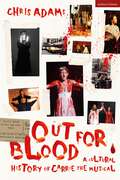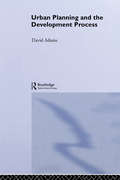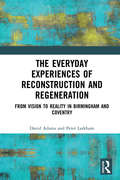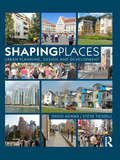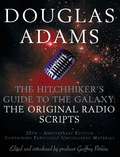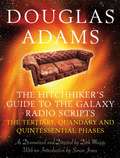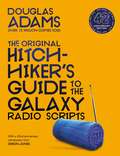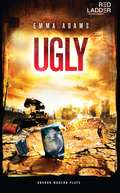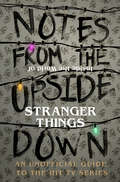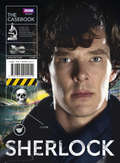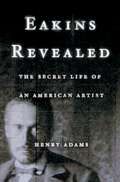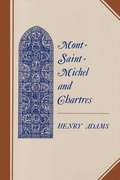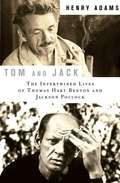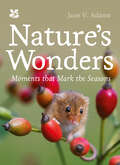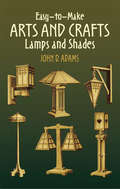- Table View
- List View
Out For Blood: A Cultural History of Carrie the Musical
by Chris AdamsFeaturing contributions from over eighty original cast members, creatives, crew and audience members, Out For Blood pieces together the surprising, hilarious and often-moving inside story of Carrie The Musical to discover how this 'horror of a Broadway musical' lived, died and was subsequently resurrected as a mainstream success story.In 1988, following the success of its production of Les Misérables and in the wake of the commercial success of mega-musicals such as Cats, Phantom of the Opera and Chess, the Royal Shakespeare Company agreed to co-produce a musical based on Stephen King's Carrie, written by the team behind Fame. The result was one of Broadway's most infamous disasters. Plagued by technical problems, on-stage chaos and a critical savaging, Carrie would soon become the by-word for musical theatre flops. But thanks to the efforts of a vocal army of fans and the impact of bootleg trading and emerging online communities, the show reinvented itself as a mainstream success story with thousands of productions worldwide.Patching together memories, archive material and contemporary reports, Out For Blood dives into the origins and development of this infamous show and examines how a promising entertainment product can swiftly gain a notorious reputation, what makes or breaks a Broadway show, and how even the most unlikely of musicals can find its place in the hearts of fans around the world.Based on the hit ten-part podcast, Out For Blood will delight theatregoers, flop aficionados and 'Friends of Carrie' alike.
Urban Planning And The Development Process
by David AdamsThis text is about the very essence of urban planning in a market economy. It is concerned with people - landowners, developers, investors, politicians and ordinary members of the public - who produce change in towns and cities as they relate to each other and react to development Pressure. Whether Such Change Occurs Slowly And Is Almost Unnoticed, Or happens rapidly and is highly disruptive, a production process is creating a finished product: the built environment. This form of production, known as the land and property development process, is regulated but not controlled by the state. Urban planning is therefore best considered as one form of state intervention in the development process.; Since urban planning would have no legitimate basis without state power, it is an inherently political activity, able to alter the distribution of scarce environmental resources. Through doing so, it seeks to resolve conflicts of interest over the use and development of land. However, urban plans that appear to favour particular interests such as house-builders above others such as community groups provoke intense controversy. Development planning can thus become highly politicized, with alliances and divisions between politicians not always explained by traditional party politics.; These issues are explored with particular reference to statutory plan-making at the local level. The author draws on his extensive research into urban planning and development, making use of recent case studies and examples to illustrate key points. There are four parts. The first explores the operation of land and property markets and development processes, and examines how the state intervenes in the form of urban planning. The second part looks at the people and organizations who play a critical role in shaping the built environment and considers their relationship with the planning system. Specific attention is paid to important actors in the development process, such as landowners, developers, financial institutions, professional advisers and to the variety of agencies in the public sector that aim to promote development. This concludes with discussion of public- private partnerships and growth coalitions. The third part of the book concentrates on local development planning.
Urban Planning And The Development Process
by David AdamsThis text is about the very essence of urban planning in a market economy. It is concerned with people - landowners, developers, investors, politicians and ordinary members of the public - who produce change in towns and cities as they relate to each other and react to development Pressure. Whether Such Change Occurs Slowly And Is Almost Unnoticed, Or happens rapidly and is highly disruptive, a production process is creating a finished product: the built environment. This form of production, known as the land and property development process, is regulated but not controlled by the state. Urban planning is therefore best considered as one form of state intervention in the development process.; Since urban planning would have no legitimate basis without state power, it is an inherently political activity, able to alter the distribution of scarce environmental resources. Through doing so, it seeks to resolve conflicts of interest over the use and development of land. However, urban plans that appear to favour particular interests such as house-builders above others such as community groups provoke intense controversy. Development planning can thus become highly politicized, with alliances and divisions between politicians not always explained by traditional party politics.; These issues are explored with particular reference to statutory plan-making at the local level. The author draws on his extensive research into urban planning and development, making use of recent case studies and examples to illustrate key points. There are four parts. The first explores the operation of land and property markets and development processes, and examines how the state intervenes in the form of urban planning. The second part looks at the people and organizations who play a critical role in shaping the built environment and considers their relationship with the planning system. Specific attention is paid to important actors in the development process, such as landowners, developers, financial institutions, professional advisers and to the variety of agencies in the public sector that aim to promote development. This concludes with discussion of public- private partnerships and growth coalitions. The third part of the book concentrates on local development planning.
The Everyday Experiences of Reconstruction and Regeneration: From Vision to Reality in Birmingham and Coventry
by David Adams Peter LarkhamSet within a wider British and international context of post-war reconstruction, The Everyday Experiences of Reconstruction and Regeneration focuses on such debates and experiences in Birmingham and Coventry as they recovered from Second World War bombings and post-war industrial collapse. Including numerous images, Adams and Larkham explore the initial development of the post-Second World War reconstruction projects, which so substantially changed the face of the cities and provided radical new identities. Exploring these cities throughout the post-war period brings into sharp focus the duality of contemporary approaches to regeneration, which often criticise mid-twentieth century ’poorly-conceived’ planning and architectural projects for producing inhuman and unsympathetic schemes, while proposing exactly the type of large-scale regeneration that may potentially create similar issues in the future. This book would be beneficial for academics and students of planning and urban design, particularly those with an interest in post-catastrophe or large-scale reconstruction projects within cities.
The Everyday Experiences of Reconstruction and Regeneration: From Vision to Reality in Birmingham and Coventry
by David Adams Peter LarkhamSet within a wider British and international context of post-war reconstruction, The Everyday Experiences of Reconstruction and Regeneration focuses on such debates and experiences in Birmingham and Coventry as they recovered from Second World War bombings and post-war industrial collapse. Including numerous images, Adams and Larkham explore the initial development of the post-Second World War reconstruction projects, which so substantially changed the face of the cities and provided radical new identities. Exploring these cities throughout the post-war period brings into sharp focus the duality of contemporary approaches to regeneration, which often criticise mid-twentieth century ’poorly-conceived’ planning and architectural projects for producing inhuman and unsympathetic schemes, while proposing exactly the type of large-scale regeneration that may potentially create similar issues in the future. This book would be beneficial for academics and students of planning and urban design, particularly those with an interest in post-catastrophe or large-scale reconstruction projects within cities.
Shaping Places: Urban Planning, Design and Development
by David Adams Steve TiesdellShaping Places explains how towns and cities can turn real estate development to their advantage to create the kind of places where people want to live, work, relax and invest. It contends that the production of quality places which enhance economic prosperity, social cohesion and environmental sustainability require a transformation of market outcomes. The core of the book explores why this is essential, and how it can be delivered, by linking a clear vision for the future with the necessary means to achieve it. Crucially, the book argues that public authorities should seek to shape, regulate and stimulate real estate development so that developers, landowners and funders see real benefit in creating better places. Key to this is seeing planners as market actors, whose potential to shape the built environment depends on their capacity to understand and transform the embedded attitudes and practices of other market actors. This requires planners to be skilled in understanding the political economy of real estate development and successful in changing its outcomes through smart intervention. Drawing on a strong theoretical framework, the book reveals how the future of places will come to be shaped through constant interaction between State and market power. Filled with international examples, essential case studies, color diagrams and photographs, this is essential reading for undergraduate and graduate students taking planning, property, real estate or urban design courses as well as for social science students more widely who wish to know how the shaping of place really occurs.
Shaping Places: Urban Planning, Design and Development
by David Adams Steve TiesdellShaping Places explains how towns and cities can turn real estate development to their advantage to create the kind of places where people want to live, work, relax and invest. It contends that the production of quality places which enhance economic prosperity, social cohesion and environmental sustainability require a transformation of market outcomes. The core of the book explores why this is essential, and how it can be delivered, by linking a clear vision for the future with the necessary means to achieve it. Crucially, the book argues that public authorities should seek to shape, regulate and stimulate real estate development so that developers, landowners and funders see real benefit in creating better places. Key to this is seeing planners as market actors, whose potential to shape the built environment depends on their capacity to understand and transform the embedded attitudes and practices of other market actors. This requires planners to be skilled in understanding the political economy of real estate development and successful in changing its outcomes through smart intervention. Drawing on a strong theoretical framework, the book reveals how the future of places will come to be shaped through constant interaction between State and market power. Filled with international examples, essential case studies, color diagrams and photographs, this is essential reading for undergraduate and graduate students taking planning, property, real estate or urban design courses as well as for social science students more widely who wish to know how the shaping of place really occurs.
The Hitchhiker's Guide to the Galaxy: The Original Radio Scripts
by Douglas AdamsMarch 1978 saw the first ever transmission of Douglas Adams' The Hitchhiker's Guide to the Galaxy on BBC Radio 4; the beginning of a cult phenomenon. The Hitchhiker's Guide to the Galaxy: The Original Radio Scripts includes a previously unpublished Hitchhiker script, 'Sheila's Ear'; an introduction by producer Geoffrey Perkins; and a Who's Who of all those involved in the radio series. This scriptbook features all twelve original radio scripts - Hitchhiker as it was written and exactly as it was broadcast for the very first time. They include amendments and additions made during recordings and original notes on the writing and producing of the series by Douglas Adams and Geoffrey Perkins. For those who have always loved Douglas Adams, as well as for his new generation of fans, these scripts are essential reading - with the previously 'lost' script making this edition a must-have piece of Adams memorabilia.
The Hitchhiker's Guide to the Galaxy Radio Scripts Volume 2: The Tertiary, Quandary and Quintessential Phases
by Douglas AdamsTwenty-five years after the original radio series of The Hitchhiker's Guide to the Galaxy exploded into the public consciousness, the further exploits of its bewildered hero Arthur Dent were finally adapted for radio by Dirk Maggs, in part using drafts written by Douglas Adams before his death. The resulting fourteen completely new episodes were produced by Above the Title Productions and broadcast on BBC Radio 4, with nearly all of the original cast reunited for recording.The Hitchhiker's Guide to the Galaxy Radio Scripts Volume 2 brilliantly bring to life the last three books in Adams' perennially popular Hitchhiker series: Life, the Universe and Everything; So Long, and Thanks for All the Fish; and Mostly Harmless. Dirk Maggs supplies notes which highlight original Adams material and explain how the cast, special effects and music were directed. The scripts are introduced by Simon Jones, who played Arthur Dent in both the original and the recent radio series, as well as in The Hitchhiker's Guide to the Galaxy television series. Douglas Adams first conceived The Hitchhiker's Guide to the Galaxy for radio and it is an honour to his memory that all five Hitchhiker novels have now been adapted for this medium. These scripts exemplify the freshness of perspective, humour and perspicacity that epitomize the work of Douglas Adams.
The Original Hitchhiker's Guide to the Galaxy Radio Scripts: The Original Radio Scripts
by Douglas AdamsMarch 1978 saw the first ever transmission of Douglas Adams' The Hitchhiker's Guide to the Galaxy on BBC Radio 4; the beginning of a cult phenomenon. March 2020 marks the 42nd anniversary of that first transmission – 42 being the answer, of course, to the Ultimate Question of Life, the Universe, and Everything. To mark the occasion, Pan Macmillan are bringing back into print The Hitchhiker's Guide to the Galaxy: The Original Radio Scripts with a brand-new introduction from Simon Jones.The collection also includes the previously 'lost' Hitchhiker script from the 25th anniversary edition, 'Sheila's Ear' and the original introductions by producer Geoffrey Perkins and Douglas Adams.This collection, which is a faithful reproduction of the text as it was first published in 1985, features all twelve original radio scripts – Hitchhiker as it was written and exactly as it was broadcast for the very first time. They include amendments and additions made during recordings and original notes on the writing and producing of the series by Douglas Adams and Geoffrey Perkins. For those who have always loved Douglas Adams, as well as for his new generation of fans, these scripts are essential reading and a must-have piece of Adams memorabilia.This special anniversary edition will sit alongside reissued eye-catching editions of the five individual Hitchhiker books coming in May 2020: The Hitchhiker's Guide to the Galaxy, The Restaurant at the End of the Universe, Life, the Universe and Everything, So Long, and Thanks for All the Fish and Mostly Harmless.
Ugly (Oberon Modern Plays)
by Emma AdamsIn a world ever more focused upon global warming, climate change and the increased scarcity of resources Ugly is a dark comedy set in a future where food and water are dangerously scarce. A tale of four people who may have to kill their angels and become more like their devils if they are going to survive. Emotional, intense and visceral, this play breaks rules. It will also break your heart…Ugly is not pretty, a timely reminder of what we are doing to our planet.....reading it might just change your life.
Notes From the Upside Down – Inside the World of Stranger Things: An Unofficial Handbook to the Hit TV Series
by Guy AdamsWith season 2 now released, don't miss out on getting the perfect gift for any Stranger Things fan in your life. Grab your Eggos and prepare to enter Hawkins, Indiana – just don't forget your fairy lightsIf you devoured Stranger Things and you're looking to fill the demogorgon-sized hole in your life, then look no further than Notes From the Upside Down. This fan handbook is here to tell you more about the origins of the show, including the mysterious Montauk Project conspiracy theory, get you clued up on the inspirations behind the characters, and assess the show's DNA. If you've ever wondered why Spielberg is such a huge influence, which Stephen King books you need to read (HINT: pretty much all of them) and how State Trooper David O’Bannon earned his name, then this book is for you. Guy Adams is a superfan and this is his amusing and informative guide to everything you're going to need to know to understand Stranger Things.
Sherlock: The Casebook
by Guy AdamsThis book is my humble attempt to shine a light on the work of the best and wisest I have ever known. He has, I think it is safe to say, elevated the science of detection into an art form. Having been at his side during some of his most remarkable cases, it has fallen to me to bring his achievements to the attention of the wider public. He is, quite simply, the Mozart of criminal investigation. I would say more, but I am flattered and delighted to say that Sherlock Holmes himself has agreed to write a piece for the cover. John Watson Don’t buy this book. The author has transformed what should have been a series of lectures into a gross and tasteless entertainment. The science of deduction is a branch of human achievement requiring serious analysis and yet here I find it lavishly illustrated, disfigured with humour and infested with gossip. Apparently, this kind of sensationalism is required to engage the interest of the reading public, but it is rather like working an office romance into a paper on quantum physics. Only an idiot would be impressed. Help yourself. Sherlock Holmes
Eakins Revealed: The Secret Life of an American Artist
by Henry AdamsThomas Eakins is widely considered one of the great American painters, an artist whose uncompromising realism helped move American art from the Victorian era into the modern age. He is also acclaimed as a paragon of integrity, one who stood up for his artistic beliefs even when they brought him personal and professional difficulty--as when he was fired from the Pennsylvania Academy of Art for removing a model's loincloth in a drawing class. Yet beneath the surface of Eakins's pictures is a sense of brooding unease and latent violence--a discomfort voiced by one of his sitters who said his portrait "decapitated" her. In Eakins Revealed, art historian Henry Adams examines the dark side of Eakins's life and work, in a startling new biography that will change our understanding of this American icon. Based on close study of Eakins's work and new research in the Bregler papers, a major collection never fully mined by scholars, this volume shows Eakins was not merely uncompromising, but harsh and brutal both in his personal life and in his painting. Adams uncovers the bitter personal feuds and family tragedies surrounding Eakins--his mother died insane and his niece committed suicide amid allegations that Eakins had seduced her--and documents the artist's tendency toward psychological abuse and sexual harassment of those around him. This provocative book not only unveils new facts about Eakins's life; more important, it makes sense, for the first time, of the enigmas of his work. Eakins Revealed promises to be a controversial biography that will attract readers inside and outside the art world, and fascinate anyone concerned with the mystery of artistic genius.
Eakins Revealed: The Secret Life of an American Artist
by Henry AdamsThomas Eakins is widely considered one of the great American painters, an artist whose uncompromising realism helped move American art from the Victorian era into the modern age. He is also acclaimed as a paragon of integrity, one who stood up for his artistic beliefs even when they brought him personal and professional difficulty--as when he was fired from the Pennsylvania Academy of Art for removing a model's loincloth in a drawing class. Yet beneath the surface of Eakins's pictures is a sense of brooding unease and latent violence--a discomfort voiced by one of his sitters who said his portrait "decapitated" her. In Eakins Revealed, art historian Henry Adams examines the dark side of Eakins's life and work, in a startling new biography that will change our understanding of this American icon. Based on close study of Eakins's work and new research in the Bregler papers, a major collection never fully mined by scholars, this volume shows Eakins was not merely uncompromising, but harsh and brutal both in his personal life and in his painting. Adams uncovers the bitter personal feuds and family tragedies surrounding Eakins--his mother died insane and his niece committed suicide amid allegations that Eakins had seduced her--and documents the artist's tendency toward psychological abuse and sexual harassment of those around him. This provocative book not only unveils new facts about Eakins's life; more important, it makes sense, for the first time, of the enigmas of his work. Eakins Revealed promises to be a controversial biography that will attract readers inside and outside the art world, and fascinate anyone concerned with the mystery of artistic genius.
Mont-Saint-Michel and Chartres: A Study of Thirteenth-Century Unity
by Henry AdamsThis first paperback facsimile of the classic 1913 edition includes thirteen photographs and numerous illustrations of the great cathedrals of Northern France. Henry Adams referred to this book as "A Study of Thirteenth-Century Unity," and its expansive scope, together with the author's deep understanding of the period, makes it a classic in art history as well as in American literature. He wrote, "I wanted to show the intensity of the vital energy of a given time, and of course that intensity had to be stated in its two highest terms-religion and art." Henry Adams' record of his journeys through France, searching for images of unity in an age of conflict, is accompanied by observations on literature, politics, religion, and maior church leaders such as Abelard, St. Francis of Assisi, and St. Thomas Aquinas.
Mont-Saint-Michel and Chartres: A Study of Thirteenth-Century Unity
by Henry AdamsThis first paperback facsimile of the classic 1913 edition includes thirteen photographs and numerous illustrations of the great cathedrals of Northern France. Henry Adams referred to this book as "A Study of Thirteenth-Century Unity," and its expansive scope, together with the author's deep understanding of the period, makes it a classic in art history as well as in American literature. He wrote, "I wanted to show the intensity of the vital energy of a given time, and of course that intensity had to be stated in its two highest terms-religion and art." Henry Adams' record of his journeys through France, searching for images of unity in an age of conflict, is accompanied by observations on literature, politics, religion, and maior church leaders such as Abelard, St. Francis of Assisi, and St. Thomas Aquinas.
Tom and Jack: The Intertwined Lives of Thomas Hart Benton and Jackson Pollock
by Henry AdamsThe drip paintings of Jackson Pollock, trailblazing Abstract Expressionist, appear to be the polar opposite of Thomas Hart Benton's highly figurative Americana. Yet the two men had a close and highly charged relationship dating from Pollock's days as a student under Benton. Pollock's first and only formal training came from Benton, and the older man soon became a surrogate father to Pollock. In true Oedipal fashion, Pollock even fell in love with Benton's wife. Pollock later broke away from his mentor artistically, rocketing to superstardom with his stunning drip compositions. But he never lost touch with Benton or his ideas-in fact, his breakthrough abstractions reveal a strong debt to Benton's teachings. I n an epic story that ranges from the cafés and salons of Gertrude Stein's Paris to the highways of the American West, Henry Adams, acclaimed author of Eakins Revealed, unfolds a poignant personal drama that provides new insights into two of the greatest artists of the twentieth century.
Nature’s Wonders: Moments that mark the seasons (National Trust)
by Jane V. Adams National Trust BooksBritain’s nature year, from the first flower to the last leaf
Easy-to-Make Arts and Crafts Lamps and Shades
by John D. AdamsFashionable in the early twentieth century, Arts and Crafts-style lamps are popular again in the twenty-first century. The elegant simplicity of these useful furnishings will inspire craftworkers to try their hand at the handsome projects described in this instructive manual.First published nearly a century ago, this step-by-step guide--with measurements for sixteen projects--shows how to turn simple, inexpensive materials into a wide range of beautiful and functional Arts and Crafts projects, among them portable table lamps, reading and piano lamps, a dining room dome, a lantern, a shade for a droplight, and wall-hanging lamps, as well as a newel post lamp, and an electric candle sconce.Antique collectors, historians of American style, and lovers of vintage furnishings will also find invaluable information in this collection of now-rare lighting fixtures.
Great Windows in Modern Architecture
by Kevin AdamsWindows are moments in modern architecture where we look to ascertain elegance, technical expression and material language or to capture a certain atmosphere. A window opening is as much an interval and an opportunity as it is a device for admitting light, air or views; it is simultaneously a physical aperture but also a philosophical opening of collaboration and reflection. In order to understand the language of a building we might look to the detail of the window. But what does this mean and why does modern architecture invest so much expression in the window?This book explores how the act of detailing and situating windows in buildings is a key proponent in the language of architecture, which both informs and works with the contingencies of design and construction. It investigates 18 case studies in-depth using painstakingly drawn details and vivid photographs in full colour to define what makes these windows “great” and how each window is situated within both its technical and philosophical context and as an overall development of modern architecture.Case studies include the work of Walter Gropius, Mies van der Rohe, Pierre Chareau, Frank Lloyd Wright, Alvar Aalto, Carlo Scarpa, Le Corbusier, Stirling and Gowan, Raili and Reima Pietilä, Louis Kahn, Peter Womersley, Miralles/Pinós, Steven Holl, Glen Murcutt and O’Donnell + Tuomey.
Great Windows in Modern Architecture
by Kevin AdamsWindows are moments in modern architecture where we look to ascertain elegance, technical expression and material language or to capture a certain atmosphere. A window opening is as much an interval and an opportunity as it is a device for admitting light, air or views; it is simultaneously a physical aperture but also a philosophical opening of collaboration and reflection. In order to understand the language of a building we might look to the detail of the window. But what does this mean and why does modern architecture invest so much expression in the window?This book explores how the act of detailing and situating windows in buildings is a key proponent in the language of architecture, which both informs and works with the contingencies of design and construction. It investigates 18 case studies in-depth using painstakingly drawn details and vivid photographs in full colour to define what makes these windows “great” and how each window is situated within both its technical and philosophical context and as an overall development of modern architecture.Case studies include the work of Walter Gropius, Mies van der Rohe, Pierre Chareau, Frank Lloyd Wright, Alvar Aalto, Carlo Scarpa, Le Corbusier, Stirling and Gowan, Raili and Reima Pietilä, Louis Kahn, Peter Womersley, Miralles/Pinós, Steven Holl, Glen Murcutt and O’Donnell + Tuomey.
Art And Psychoanalysis
by Laurie Schneider AdamsA pioneering overview of art and psychoanalysis that shows how each field can enrich and enlarge the other.
Art And Psychoanalysis (Icon Editions)
by Laurie Schneider AdamsA pioneering overview of art and psychoanalysis that shows how each field can enrich and enlarge the other.
Italian Renaissance Art
by Laurie Schneider AdamsNow thoroughly revised and updated throughout, featuring extended discussions of Mannerism and the expanding role of women in the visual arts and significant illustration program enhancements, Italian Renaissance Art is a readable, student-friendly, lavishly-illustrated introduction to one of the greatest periods of artistic genius in western history.Art historian Laurie Schneider Adams opens the text with the late Byzantine work of Cimabue and concludes with the transition to Mannerism. The author presents the most important and innovative artists and their principal works, with a clear emphasis on selectivity and understanding. Italian Renaissance Art also focuses on style and iconography, and on art and artists, incorporating different methodological approaches to create a wider understanding and appreciation of the art.Distinguishing features of the second edition include:More than 400 images throughout the work, with over 300 in full-color. Over 50 images were changed from black and white to full-color for this edition. Illustration program now includes works by Correggio, Bronzino, and Pontormo.Large format illustrations retained for readability and visual access by students. Design changes make the text more attractive and readable.?Connections,? with thumbnail images of earlier works, show the historical continuity of the images. ?Comparison? thumbnails have also been added for the purpose of comparing and contrasting later works with earlier ones.New treatment of Mannerism and the expanding role of women in the visual arts. Coverage includes Lavinia Fontana, Sofonisba Anguissola, and Properzia de' Rossi, and a new feature box discusses the role of Isabella d'Este as an influential art patron and humanist.Maps, plans, and diagrams included throughout. Also features a historical chronology, a full glossary of art-historical terms, and a select bibliography.
